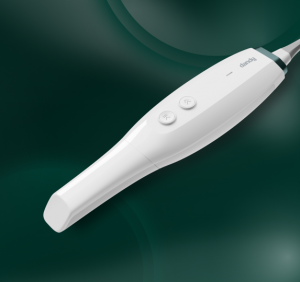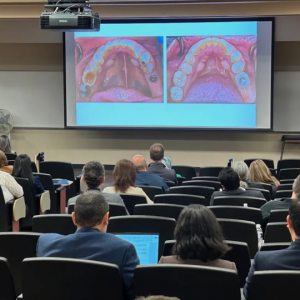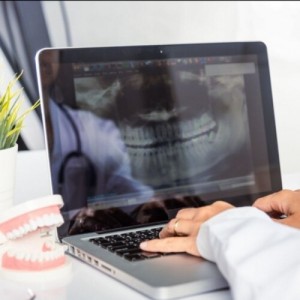
Prosthetic and Conservative Rehabilitation with 3 step technique: a clinical case
Franco De Chiesa
The patient M. D. (years 52) comes to our observation showing the need to improve in a less invasive way his dental situation that has deteriorated over the years, alarmed by the pigmentation and wear of the front group (fig 1,2,3).
The general anamnesis is negative, while the dental history presents: grinding and nocturnal lock, chewing problems, cigarette smoke (30 a day), frequent use of mate grass (infusion). These habits have generated over the years a problem of abrasion and reduction of the upper and lower incisal length and slight collapse of the perilabial soft tissues with consequent functional problems (reduced masticatory capacity) and aesthetic problems (dyschromia, reduced incisor length).
The intraoral visit we see numerous incongruous restorations (old composites and amalgams, implants and Richmond on natural teeth) in the lateral sectors and the periodontal survey shows a slight horizontal reabsorption. Considering the patient's expectations, and the precise request to adopt the least invasive treatment possible, and after a careful evaluation of the clinical photos, study models and digital waxing (digital smile system), the dental technician performs the waxing of the 2nd sextant and creates a silicone mask for direct molding of the mock-up (fig 4-6).
This test is carried out with the necessary modifications then transferred through an impression in the laboratory, in order to respect the correct incisal length of the frontal group from the phonetic point of view and the correct aesthetic plan. During the second appointment the waxing of the lateral sectors is transferred into the oral cavity, with the use of rigid transparent silicone keys (fig 4,5). Then the lower incisal group is temporarily reconstructed with the aid of a lingual support template (fig 6). Once the occlusal contacts have been adjusted, the patient is discharged in order to test the new vertical dimension.
At the next follow-up visit, the patient does not report any muscular or articular problems, so we decide to proceed with the definitive restoration with palatal composite facets of the 2nd sextant, using a plaster model CAD / CAM technique, trying to be the most conservatives possible (Fig 7-14).
The next phase of the treatment consists in rehabilitating the posterior sectors by means of indirect restorations of CAD / CAM in lithium disilicate (onlays, crowns, inlays) both on the residual dental elements and on the implants (Fig 15-26).
Finally, the vestibular composite faces CAD / CAM on the lower incisors were applied in order to restore the correct aesthetics and function.It is important to specify that the buccal veneers (as in the sandwich technique) were not applied on the 2nd sextant because the patient was largely satisfied with the result achieved. To complete the rehabilitation performed, a night-time protective bite was delivered to the patient to limit the damages due to his parafunctions (Fig 27-31).
 Related articles
Related articles
Digital Dentistry 04 November 2025
Digitalisation is an expanding field in dentistry and implementation of digital teaching methods in dental education is an essential part of modern education.
News 03 November 2025
Dandy, a fully digital dental lab, today unveiled two new products for digital dentistry: the revolutionary Dandy Vision intraoral scanner and the powerful.
Editorials 02 October 2025
U-M School of Dentistry hosts national symposium on digital dentistry education
The University of Michigan School of Dentistry hosted a national Digital Dentistry Educators Symposium last week that drew faculty and leaders from 35 dental schools around the country.
Digital Dentistry 29 August 2025
Digital dentistry: The new state of the art — Is it disruptive or destructive?
Summarizing the new state of the art of digital dentistry, opens exploration of the type and extent of innovations and technological advances that have impacted – and improved – dentistry.
Endodontics 15 August 2025
Feasibility of Implementing Digital Dentistry Section in Dental Clinic of a Military Centre
Digital dentistry is not the wave of the future, it is happening now. Whether a dentist embraces the new technology determines the quality of treatment and possibly his future; for this reason,...
 Read more
Read more
Periodontology 14 November 2025
This study was carried out to assess the oral hygiene awareness and practices amongst patients visiting the Department of Periodontology at Gian Sagar Dental College and Hospital, Ramnagar (Patiala).
Editorials 14 November 2025
Penn Dental Medicine shared its expertise in caring for persons with disabilities with dental care providers from throughout Jamaica at a 1 ½ -day hands-on continuing education program, held October...
News 14 November 2025
Dr. Thomas M. Paumier, a dentist in Canton, Ohio, is the new President-Elect of the American Dental Association (ADA). Dr. Paumier was elected at the ADA House of Delegates meeting in Washington,...
News 14 November 2025
Premier Dental Implants & Prosthodontics is proud to announce the opening of its newly renovated dental office and the launch of its new website
News 14 November 2025
Henry Schein One and AWS Collaborate to Transform Global Dentistry with Generative AI
Industry leaders join forces to bring advanced AI capabilities to dental technology platforms — redefining patient care, clinical efficiency, and practice performance worldwide













































